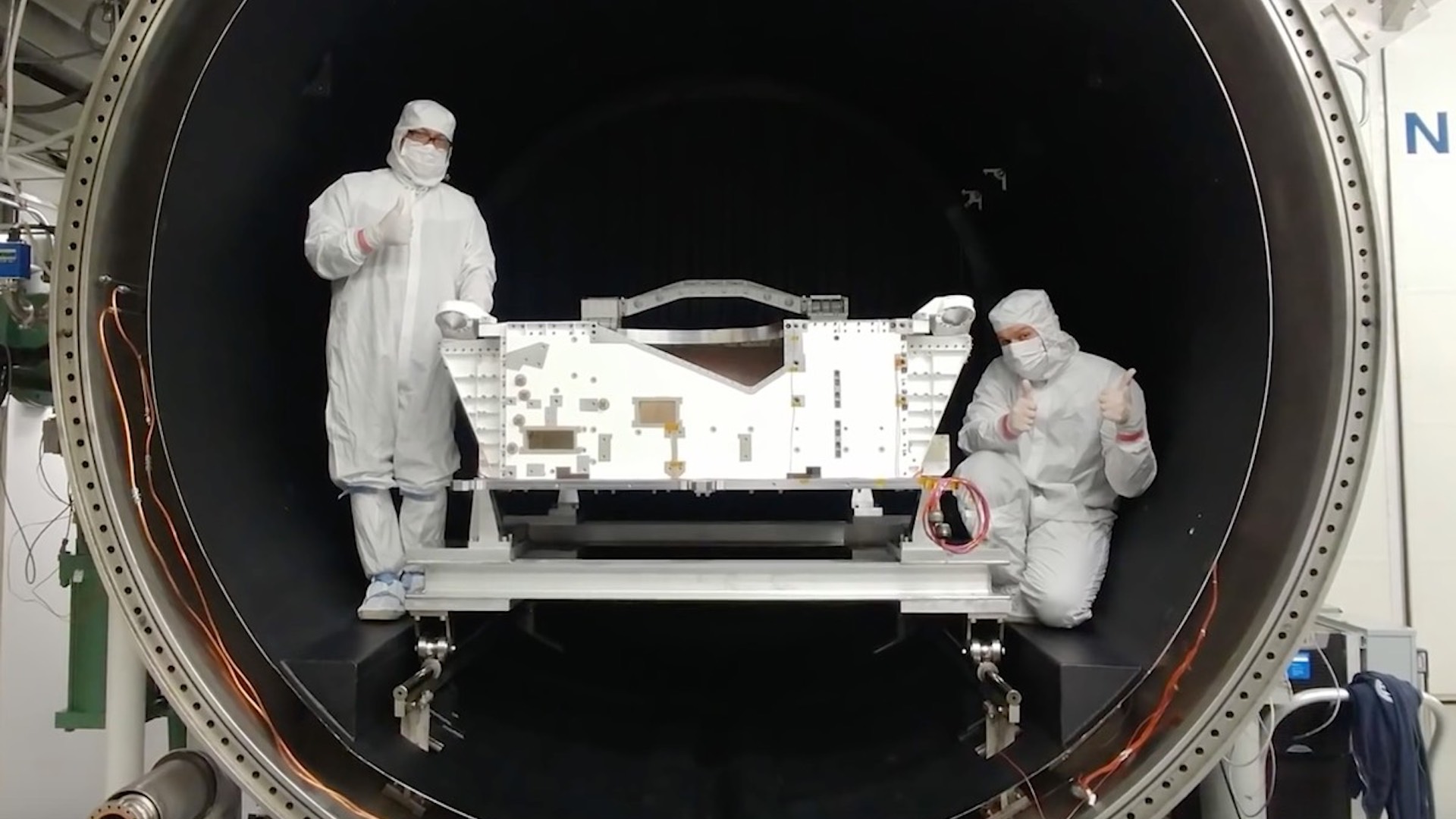

The Mars 2020 rover required three people and several days to properly apply condition-resistant paint to components of the vehicle’s chassis. The high-tech material is integral to the rover’s ability to withstand the planet’s climate conditions, ranging from a thin atmosphere, intense cold, and strong UV rays.
According to Ars Technica, the chassis itself took engineers and technicians from NASA’s Jet Propulsion Labs (JPL) 5,000 hours to assemble. Once it was complete, it was handed over to JPL’s John Campanella, who has a large portfolio of custom-painted projects that are currently traversing the far reaches of space including the Pathfinder, Juno, Deep Impact, and Cassini missions.
“I think my paint is just about everywhere in the solar system,” said Campanella.

Campanella’s team first had to apply over 600 pieces of masking tape to parts of the chassis that paint would render ineffective. While the tape itself is just regular, off-the-shelf variety, Campanella’s team used a computer-operated cutting machine to get those pieces as accurately sized as possible. It was also important to protect some of the more essential areas of the chassis while working on the rest, so 130 sheet-metal stencils were used as protection.
The primer and white paint used needed to satisfy three vital conditions. It had to be able to stick to the aluminum which comprised the chassis and be robust enough to withstand the planet’s harsh and fluctuating climate conditions. Perhaps most importantly, the materials could under no way taint the planet with organic compounds (as it could contaminate any collected samples) and jeopardize the scientific equipment on board. Hence, the completed chassis spent three days in a vacuum chamber to toughen the paint and eliminate any contaminants..
Ultimately, space exploration and planetary analysis are rooted deeply in our wiring as human beings. It’s simply a high-tech extension of traversing the oceans a few centuries ago and flying across continents shortly after that. In an age of political uneasiness and climate change becoming increasingly disconcerting, knowing we’re still bold and capable enough to reach for the stars is a comforting truth.
The Mars 2020 rover now sits in JPL’s Spacecraft Assembly Facility in Pasadena, California. The nuclear-powered, six-wheel vehicle is scheduled to launch in July 2020 from Cape Canaveral with an expected arrival on Mars in February 2021.